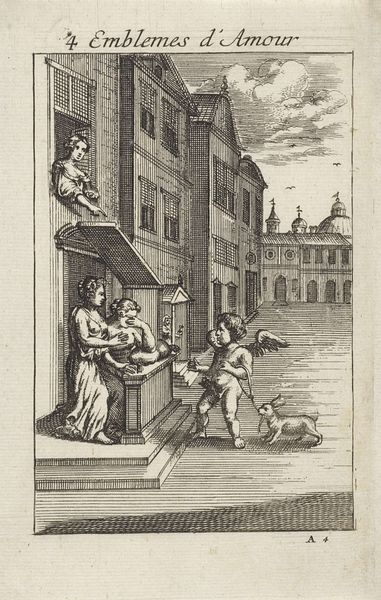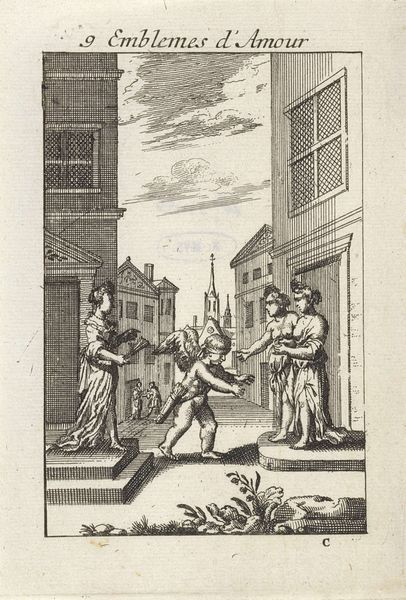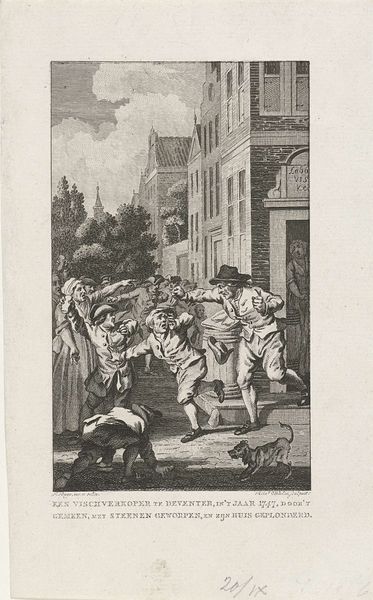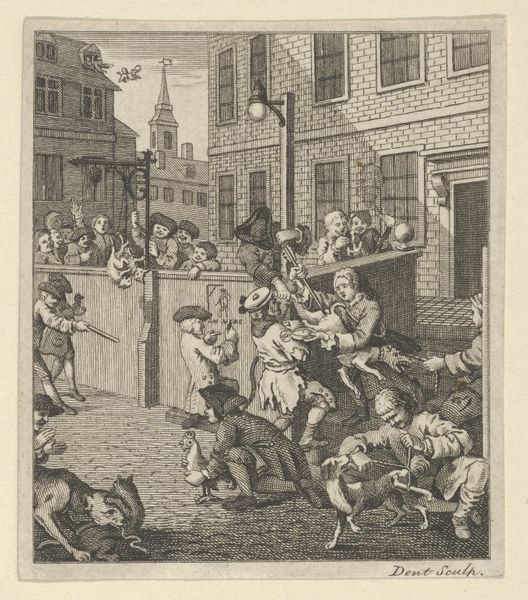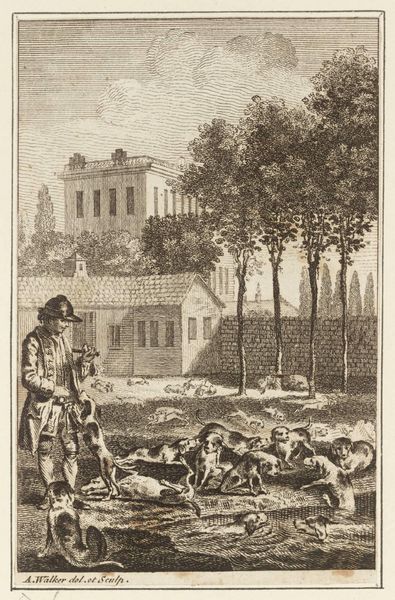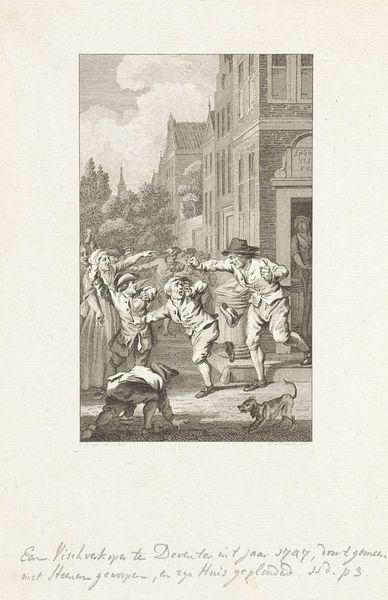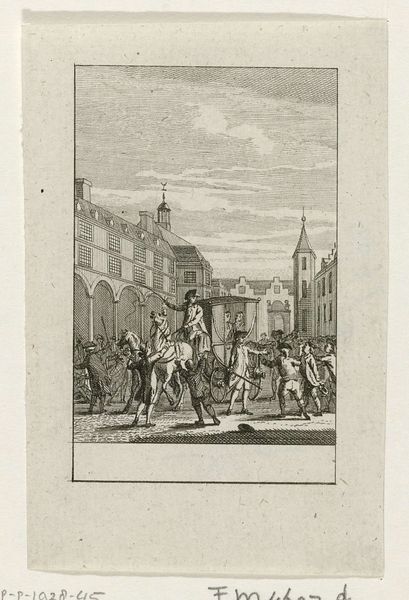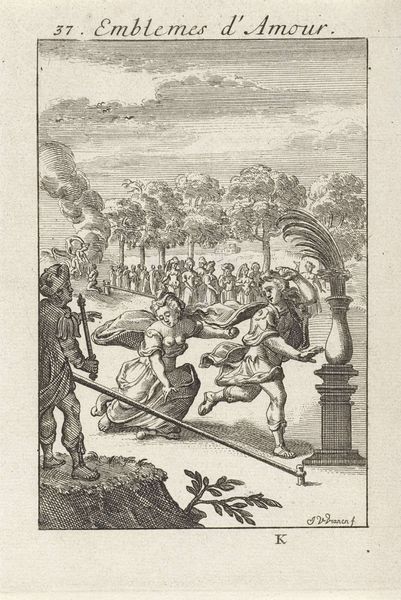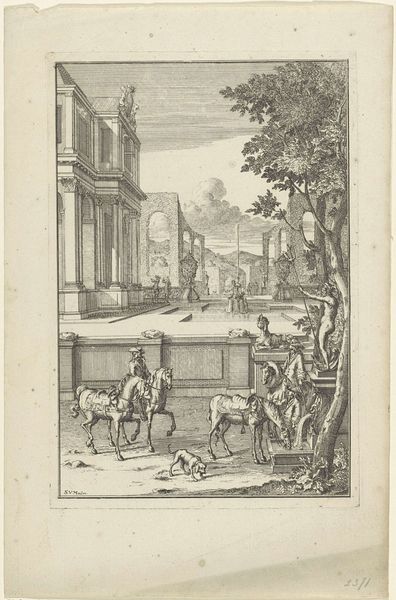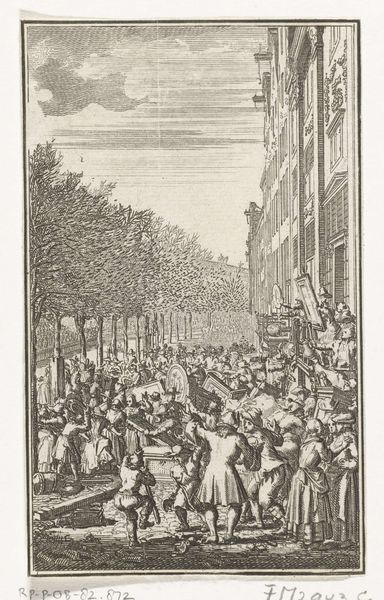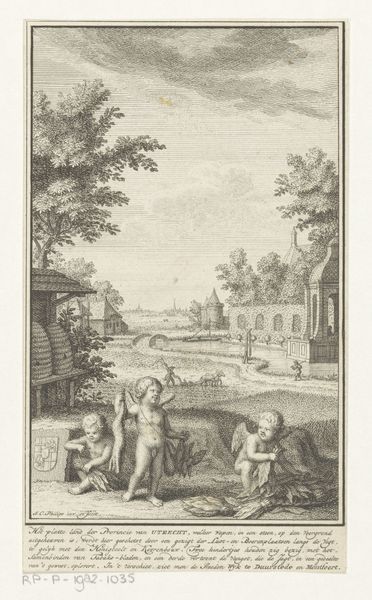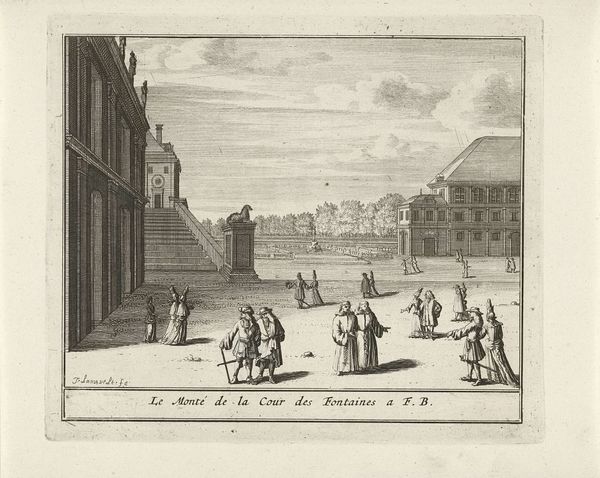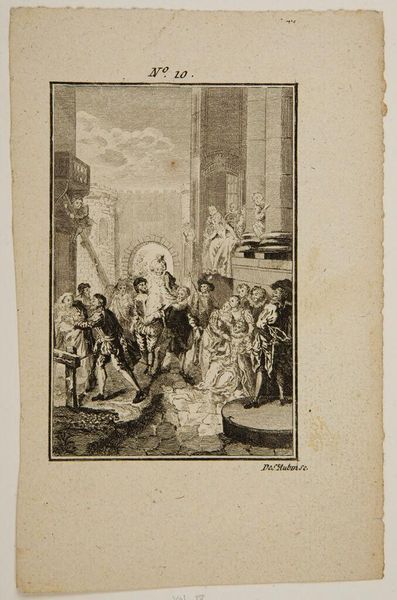
print, engraving
#
allegory
#
narrative-art
#
baroque
# print
#
cityscape
#
genre-painting
#
engraving
#
erotic-art
Dimensions: height 145 mm, width 95 mm
Copyright: Rijks Museum: Open Domain
Curator: Welcome! We’re standing before Jan van Vianen's engraving, “Amor bij twee vechtende honden,” created around 1686. Editor: Immediately, there’s a kind of bizarre tension—the crisp architecture and then the… canine mayhem, observed by an indifferent Cupid. The overall tone feels cynical, or at least wry. Curator: That’s insightful. Van Vianen was working during a period where emblem books and allegorical prints were incredibly popular. This print, like many others, used imagery loaded with symbolic meaning intended to teach moral lessons or offer commentary on society. I see it within a visual culture deeply entrenched in the sociopolitical dialogues of its time. Editor: Right, I think it hits on love, or at least eroticism, as something messy and combative, not the idealized cherubic image we're spoon-fed. It feels very knowing about the power dynamics in relationships—especially given that it’s being overlooked by what seems like a feckless cupid more interested in strolling down a plaza in apparent comfort as others face peril. How were images like these circulated at the time? Were they accessible to a wide audience? Curator: They were relatively accessible through print shops and were often included in books. The engraving medium allowed for reproduction and circulation among a growing middle class with more access to visual materials than before. Furthermore, it speaks volumes about gender, power and erotic violence in the public sphere, which must be understood given that these sorts of displays are still prevalent and very telling about where power lies. The city street in the background perhaps implicates the world itself as the breeding ground for the combative amor portrayed up front? Editor: Absolutely. By embedding the allegory within a bustling city street scene, Vianen implies that these chaotic and even violent interactions aren't isolated incidents but intrinsic aspects of public life. The inclusion of background figures near a possible water pump seemingly uninterested, underscores this integration of amor and animosity into everyday affairs. Considering the backdrop, it reminds me that urban spaces themselves, particularly in early modern Europe, were intensely gendered and charged with erotic undertones. I can imagine this scene mirroring tensions and desires percolating within Dutch society. What should a contemporary audience take away from this? Curator: Perhaps it’s that the narratives we construct around love, desire, and conflict are always embedded within broader socio-political realities. Jan van Vianen used what he knew and felt from what he knew—I suggest we do the same as observers looking back. Editor: It certainly provides an unusual mirror to contemplate contemporary relational dynamics with renewed clarity.
Comments
No comments
Be the first to comment and join the conversation on the ultimate creative platform.
